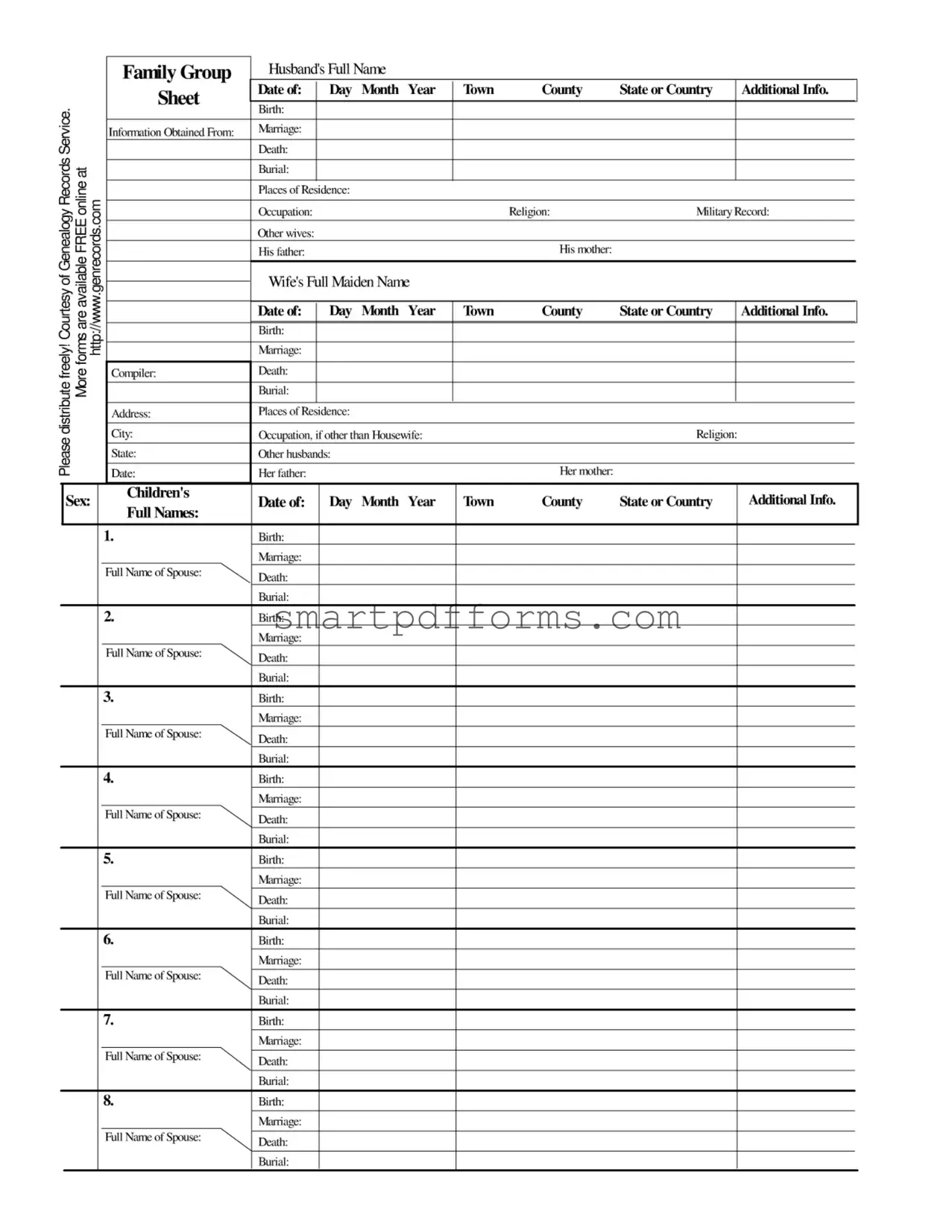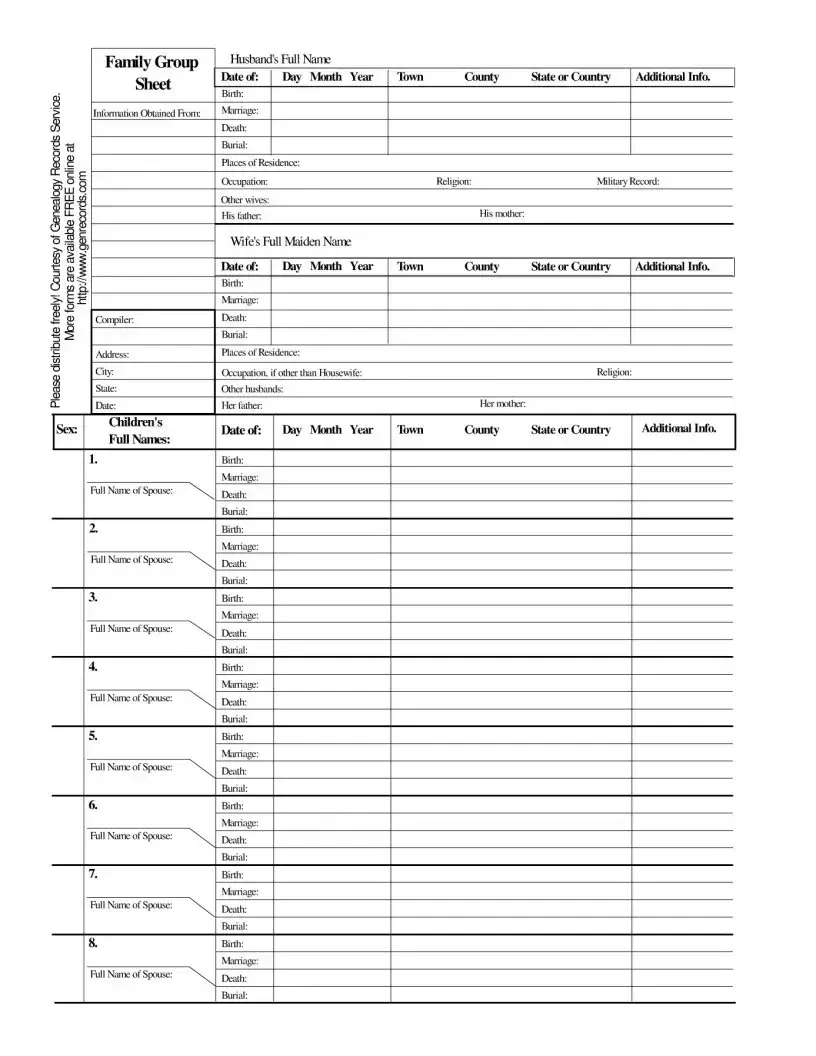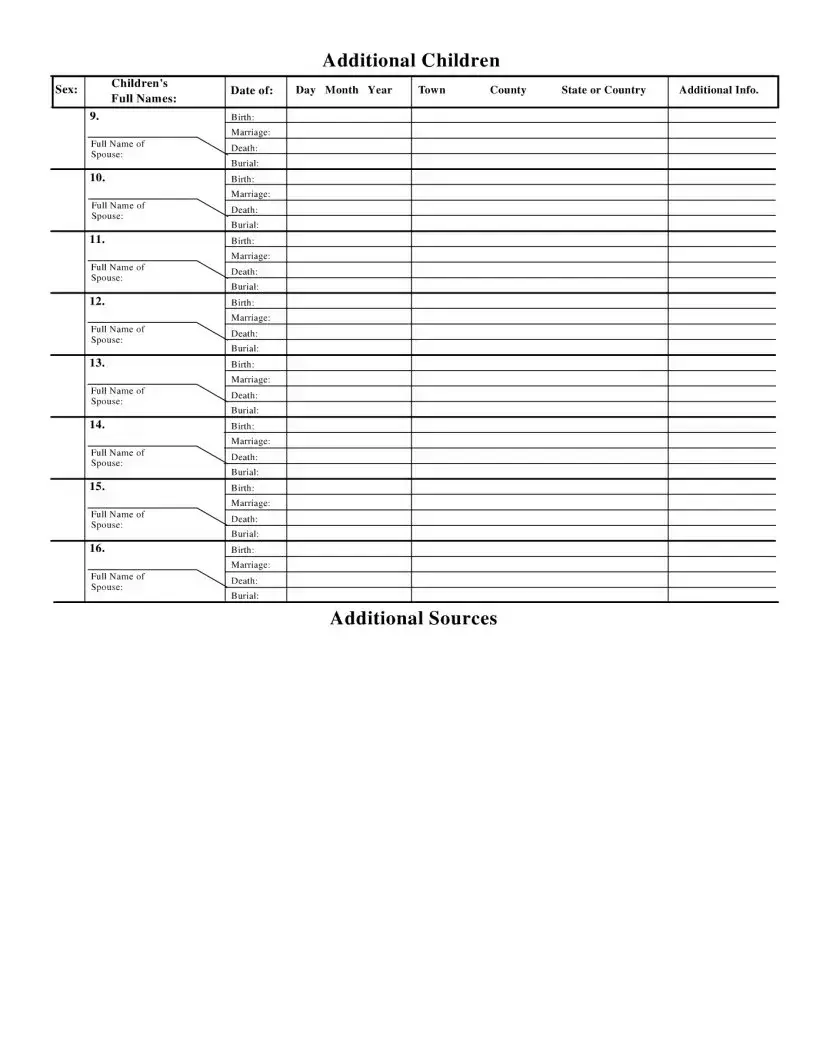Blank Family Group Sheet PDF Template
The Family Group Sheet form is a comprehensive document used to record detailed information about a husband and wife, their children, and significant events such as births, marriages, deaths, and burials. It includes sections for noting places of residence, occupations, religious affiliations, military records, and details about parents and additional spouses. To ensure you have a complete record of your family's history, consider filling out the Family Group Sheet form by clicking the button below.
Make This Document Now


